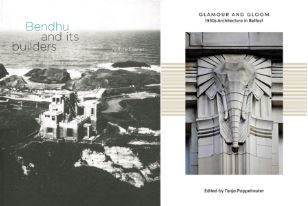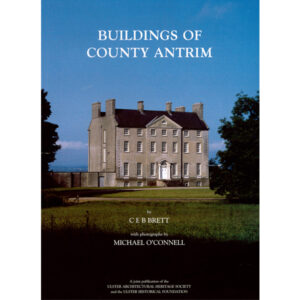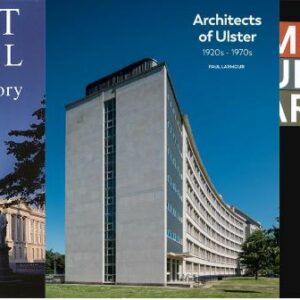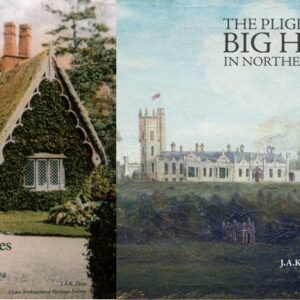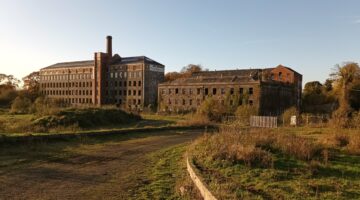1930s Modernism Book Bundle
£20.00
9 in stock
Get Glamour & Gloom: 1930s Architecture in Belfast (Soft back) and Bendhu and its Builders (Soft Back) for £20! Two soft back books for the great value price of £20 saving you more than £15.
Members get a further 25% OFF. Use voucher code Member25 at checkout. Membership will be verified on purchase.
The bundle includes:
Glamour & Gloom: 1930s Architecture in Belfast (Soft back).
Glamour and Gloom: 1930s Architecture in Belfast is a richly illustrated book which features a selection of modern buildings that together display the architectural variety of the period in the northern metropolis. In his foreword to the publication, renowned Irish architectural critic Shane O’Toole says: ‘Glamour and Gloom contains much new scholarship and is a superb introduction to the surprisingly exotic architecture of Belfast in the 1930s, the decade that can justifiably claim to be the foundation stone of our modern world.’ The book, edited by Dr Tanja Poppelreuter, Lecturer in the History and Theory of Architecture at Ulster University, continues the fine architectural historical publishing tradition of the Ulster Architectural Heritage Society (UAHS).
Buildings featured in Glamour and Gloom include the former Bank of Ireland on Royal Avenue, which was planned at the cusp of the Great Depression and inspired by American skyscrapers so that it displays the aims and aspirations of the architect and the bank towards future wealth and prosperity, as well as the nearby one-time Sinclair’s Department Store with its luxurious façade reflecting the rise of consumerism. The former Woolworth’s Department Store in High Street reverberates with the echoes of ‘Egyptomania’ that that had begun with Howard Carter discovering the tomb of King Tutankhamen.
Also included are studies of 1930s cinemas which housed the new technology that made synchronised sound possible and the new ‘Talkies’ that sparked a cinema boom. The architecture of the new picture palaces epitomised the glamour of Hollywood and offered a distraction from everyday life. Amenities such as telephones, radios and refrigerators that are ubiquitous today, proliferated during the 1930s, while clothing stores such as Burton’s the Tailors provided smart outfits for everyone, and new school buildings improved the primary education of children. All in all, these buildings and structures remind us of a decade during which decisive changes towards a modern way of life took place.
This striking new book will appeal to anyone interested in the history and legacy of the architecture and design of this period in Belfast. With a wealth of excellent photographs and a range of essays and 19 case studies, it provides a valuable insight into twentieth century architectural heritage.
Bendhu and its Builders
by Andrew Cowser, 2009. Soft Back, 243pp,.
Few who have visited the Giant’s Causeway coastline of Northern Ireland will have failed to notice the unique and some say eccentric building known as Bhendu. It stands sentinel on the cliffs overlooking Ballintoy harbour, its concrete form and unusual silhouette of cubes and finials distinguishing it from the pitched roofed cottages that prevail on the north Antrim coast.
Bhendu was the creation of a remarkable Cornish artist, Newton Penprase (1888-1978), who at the age of forty-seven started to realise his vision for a unique house by the sea, changing the design as work proceeded, defying Atlantic gales and the occasional hostility of local people. For forty years he laboured on its construction using the material of his choice, concrete, reinforced with recycled railway lines and other materials that became available. The house was later completed and extended by two subsequent owners, Richard Mac Cullagh and Michael Ferguson.
For the first time the fascinating story of the building of this idiosyncratic house is being told. Bhendu is now accepted as an early, if maverick, Modernist structure in Ulster, and is only now being seen in the context of architectural developments of its time.
The book also provides an insight into the life and artistic output of Cornishman, Newton Penprase.
*Offer excludes postage
| Weight | 1382 g |
|---|

